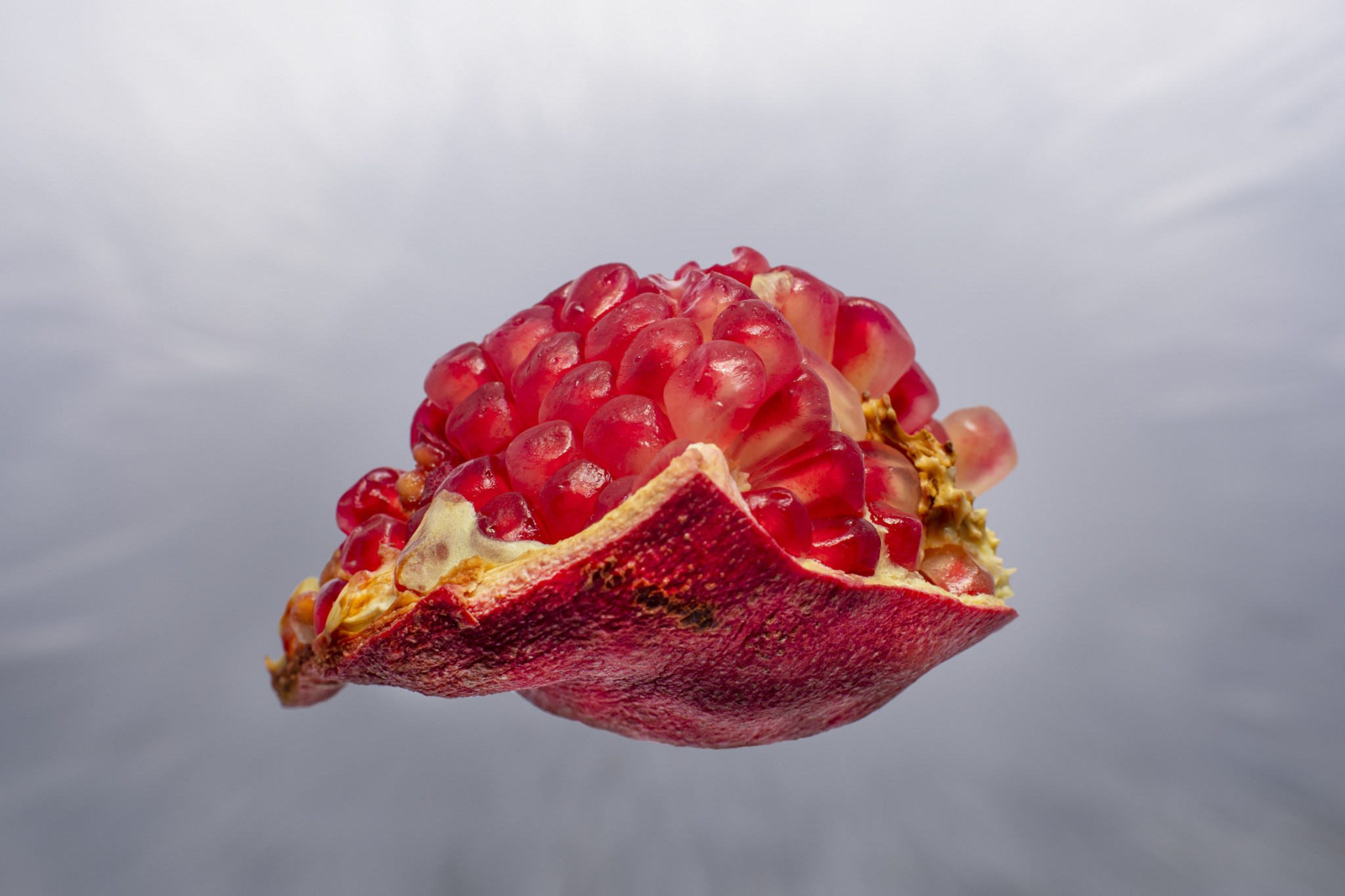The pomegranate, scientifically known as Punica granatum, is a fascinating and highly nutritious fruit that has captured the attention of cultures around the world for centuries. With its distinctive appearance, vibrant flavor, and myriad health benefits, the pomegranate has earned its place as a revered symbol of fertility, abundance, and rejuvenation.
Native to regions of the Middle East and Asia, the pomegranate is cultivated in various parts of the world today, including the Mediterranean, California, and parts of Asia and Africa. It thrives in hot, arid climates and is prized for its ability to withstand drought and poor soil conditions, making it a valuable crop in regions with challenging agricultural environments.
The pomegranate is characterized by its unique appearance, with a tough, leathery skin that ranges in color from deep red to yellow-orange, depending on the variety. Inside, the fruit is filled with hundreds of juicy arils, each containing a seed surrounded by a translucent, ruby-red pulp. These arils burst with a sweet-tart flavor that is both refreshing and deeply satisfying, making them a popular ingredient in a wide range of culinary applications.
One of the most remarkable aspects of the pomegranate is its rich nutritional profile. Packed with vitamins, minerals, antioxidants, and phytochemicals, pomegranates have been celebrated for their potential health benefits for centuries. They are particularly high in vitamin C, potassium, and fiber, as well as a unique group of polyphenolic compounds called punicalagins and punicalins, which are potent antioxidants with anti-inflammatory properties.
Research suggests that consuming pomegranate or pomegranate juice may offer a range of health benefits, including improved heart health, reduced inflammation, enhanced cognitive function, and even potential protection against certain types of cancer. Studies have shown that pomegranate extract may help lower blood pressure, improve cholesterol levels, and reduce oxidative stress, all of which are important factors in maintaining overall health and well-being.
In addition to its nutritional value, the pomegranate holds significant cultural and symbolic importance in many societies. In ancient mythology and religious texts, the pomegranate is often associated with themes of fertility, prosperity, and rebirth. It has been revered as a sacred fruit in various traditions, symbolizing abundance, vitality, and the cycle of life.
The pomegranate’s rich symbolism is reflected in its widespread use in art, literature, and ritual practices throughout history. In many cultures, the fruit is prominently featured in religious ceremonies, weddings, and other auspicious occasions as a symbol of blessings and good fortune. Its vibrant color and exotic appearance make it a popular motif in decorative arts, textiles, and architectural ornamentation, where it is valued for its beauty and symbolic significance.
Beyond its cultural and culinary significance, the pomegranate also plays a role in traditional medicine and folk remedies. In many cultures, pomegranate juice, extract, and seeds have been used for centuries to treat a variety of ailments, including digestive disorders, skin conditions, and infections. While modern scientific research has begun to validate some of these traditional uses, further studies are needed to fully understand the therapeutic potential of pomegranates and their constituents.
In conclusion, the pomegranate is a remarkable fruit with a rich history, a wealth of nutritional benefits, and profound cultural significance. From its origins in ancient civilizations to its modern-day appeal as a superfood, the pomegranate continues to captivate and inspire people around the world. Whether enjoyed fresh, juiced, or incorporated into culinary creations, the pomegranate remains a symbol of vitality, abundance, and the enduring power of nature’s bounty.
Sure, here’s a delicious and refreshing recipe for Pomegranate, Feta, and Quinoa Salad:
Ingredients:
- 1 cup quinoa, rinsed
- 2 cups water or vegetable broth
- 1 pomegranate, seeds removed
- 1/2 cup crumbled feta cheese
- 1/4 cup chopped fresh parsley
- 1/4 cup chopped fresh mint leaves
- 1/4 cup chopped red onion
- 1/4 cup chopped walnuts (optional)
- Juice of 1 lemon
- 2 tablespoons extra virgin olive oil
- Salt and pepper to taste
Instructions:
- In a medium saucepan, bring the water or vegetable broth to a boil. Stir in the quinoa, reduce heat to low, cover, and simmer for 15-20 minutes, or until the quinoa is tender and the liquid is absorbed. Remove from heat and let cool.
- While the quinoa is cooking, prepare the other ingredients. Cut the pomegranate in half and remove the seeds. Chop the parsley, mint, and red onion.
- In a large mixing bowl, combine the cooked quinoa, pomegranate seeds, crumbled feta cheese, chopped parsley, mint, red onion, and walnuts (if using).
- In a small bowl, whisk together the lemon juice and extra virgin olive oil. Pour the dressing over the salad and toss until well combined. Season with salt and pepper to taste.
- Serve the salad chilled or at room temperature as a side dish or light meal. Enjoy the refreshing combination of flavors and textures!
This Pomegranate, Feta, and Quinoa Salad is not only delicious but also nutritious, packed with protein, fiber, vitamins, and antioxidants. It’s perfect for a quick and healthy lunch, a side dish at dinner, or as a colorful addition to a potluck or picnic. Feel free to customize the recipe with your favorite herbs, nuts, or additional ingredients to suit your taste preferences. Enjoy!
Views: 343
Subscribe to the newsletter:
